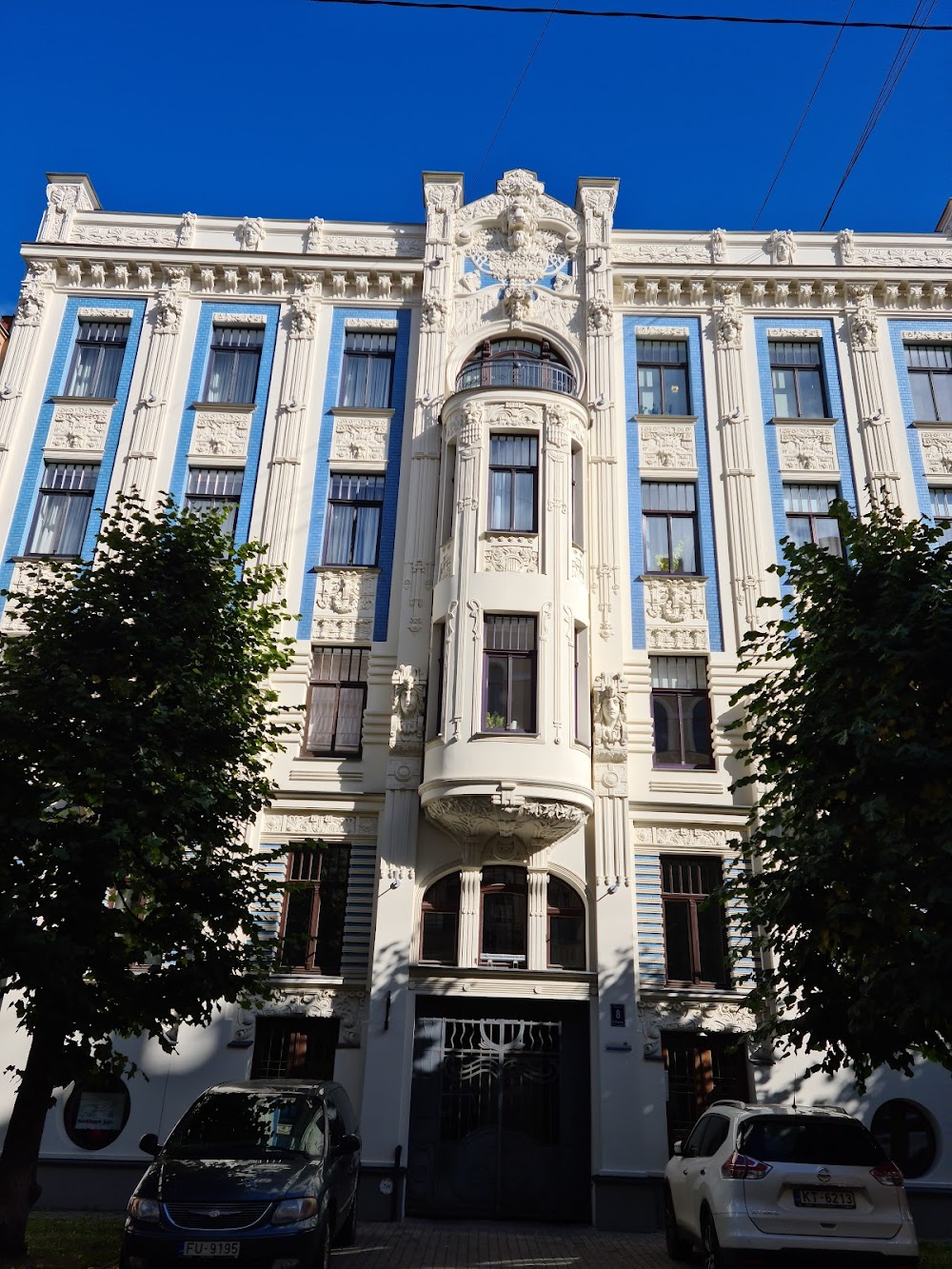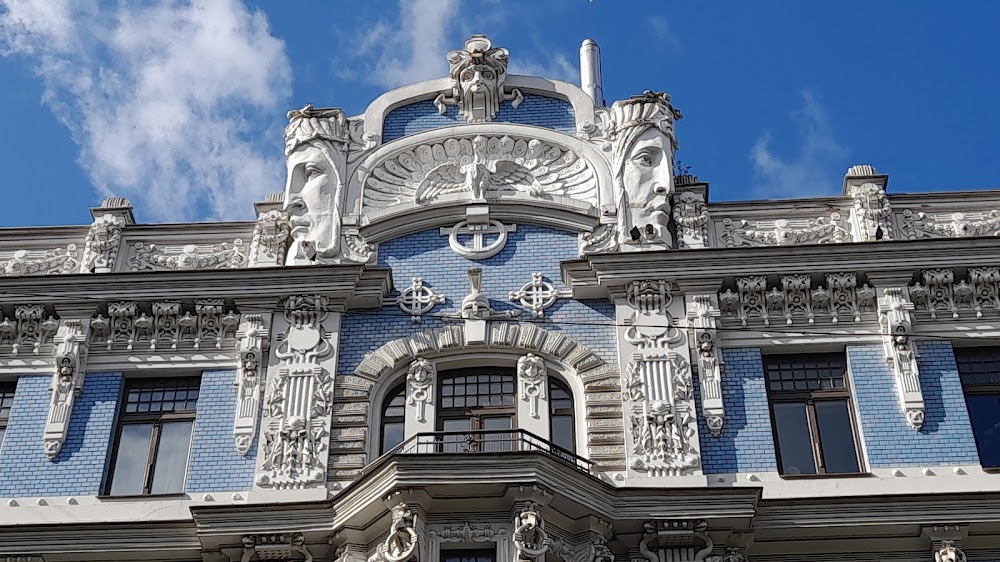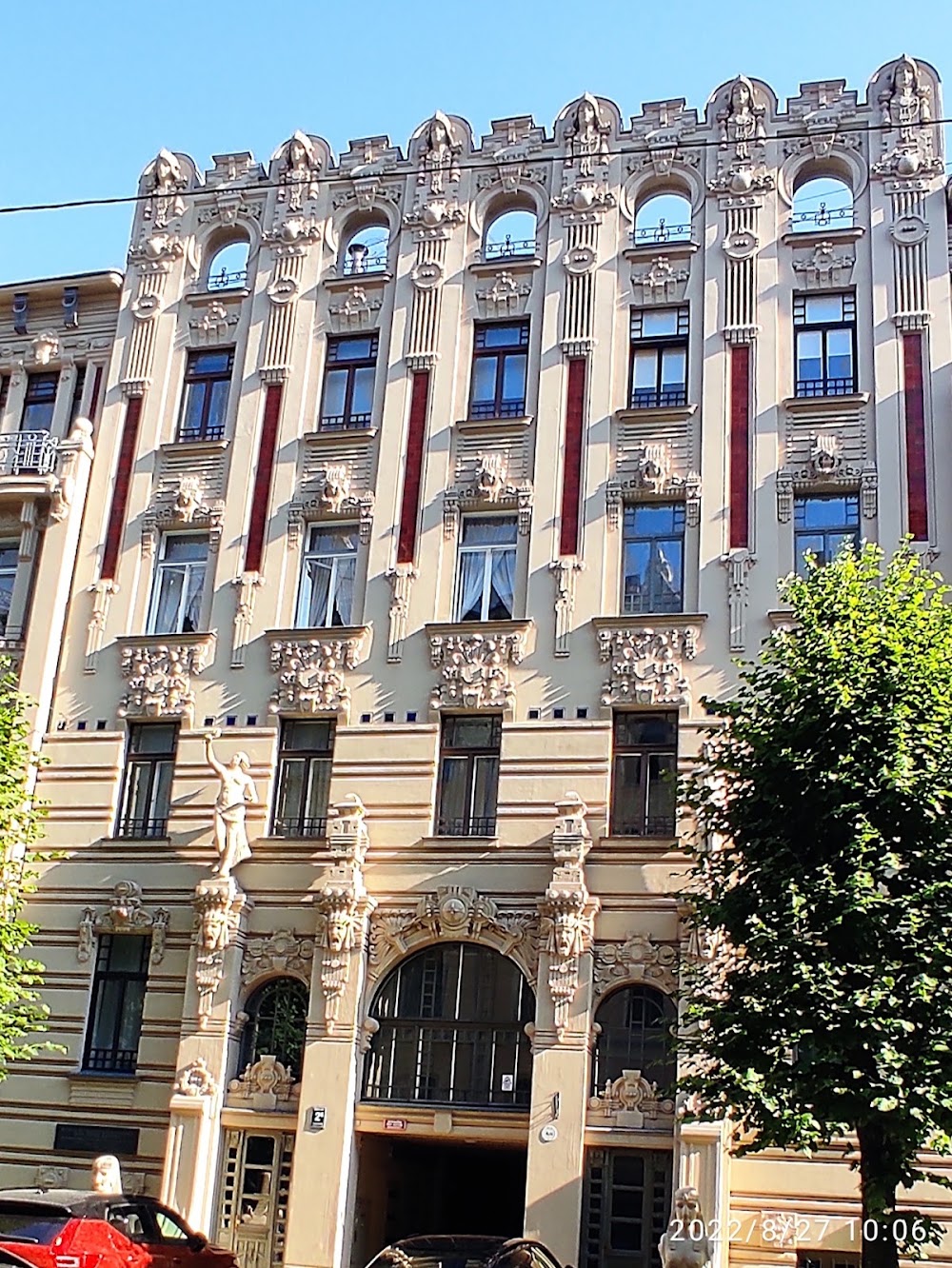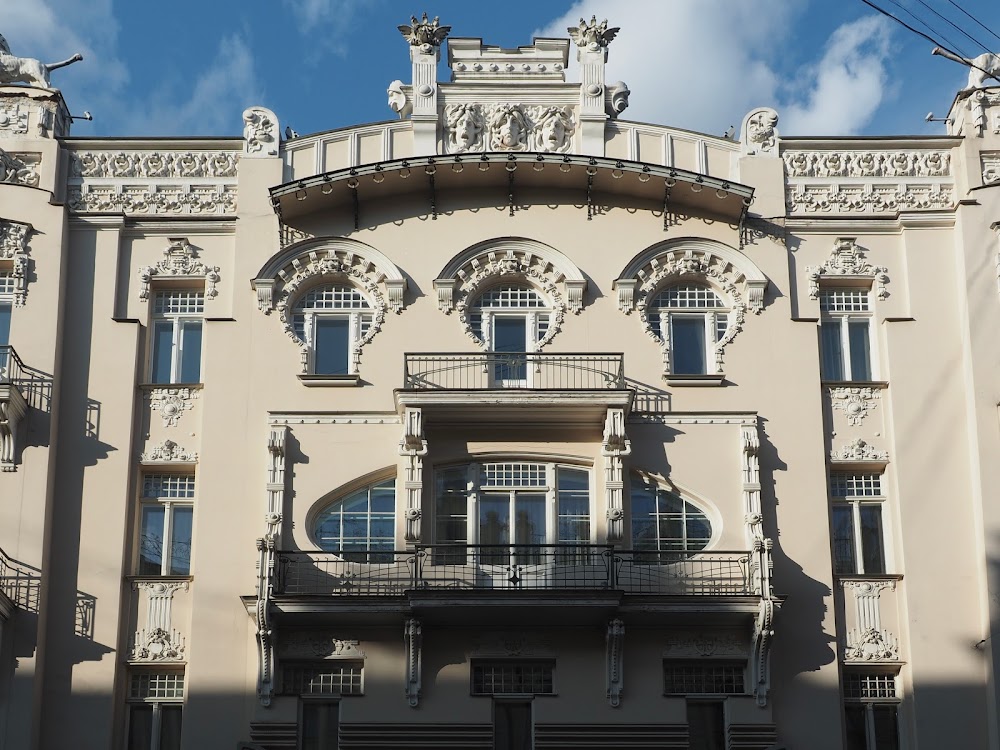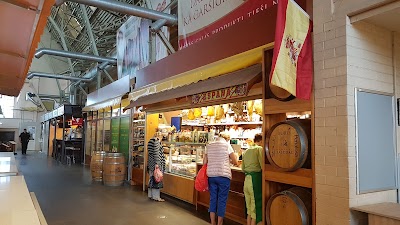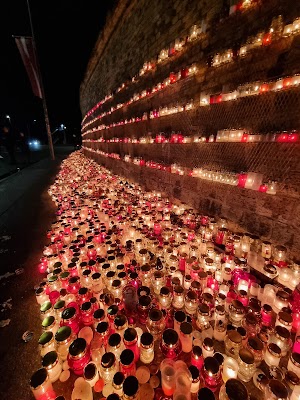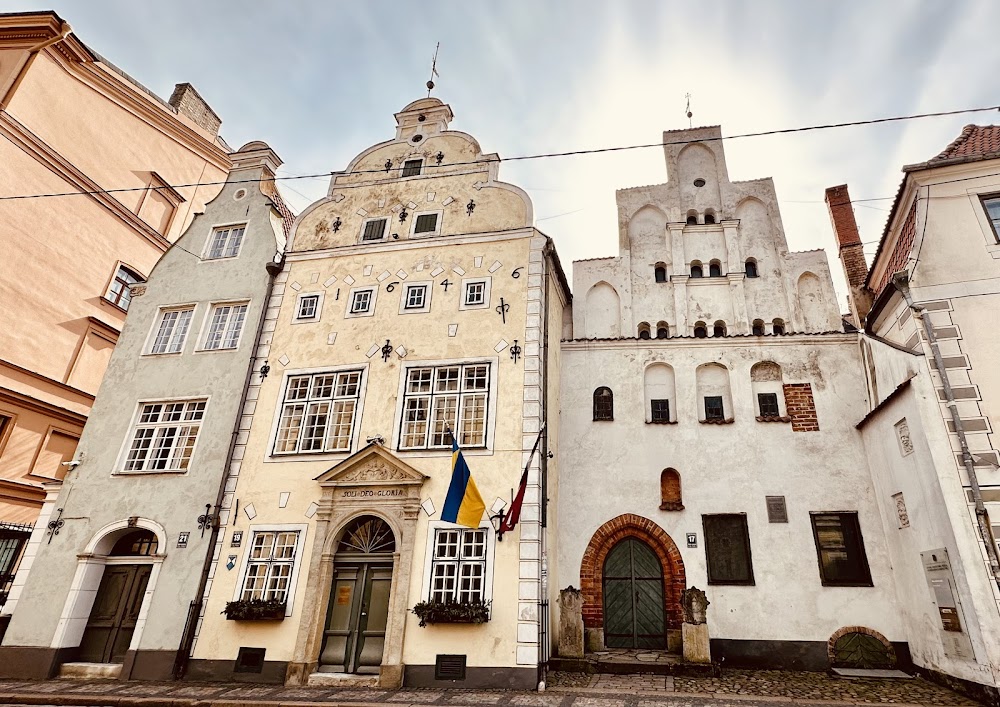Art Nouveau District (Jugendstila rajons)
Overview
Riga, the vibrant capital of Latvia, boasts an architectural treasure known as the **Art Nouveau District**. Nestled primarily along Alberta iela (Alberta Street) and Elizabetes iela (Elizabeth Street), this enchanting area is renowned for its remarkable concentration of Art Nouveau buildings, celebrated for their intricate and elaborate designs.
The origins of this architectural marvel date back to the turn of the 20th century, a period when Riga was undergoing rapid growth. The city's affluent elite sought modern and stylish residences that reflected their wealth and refined tastes. During this time, Art Nouveau—known as **Jugendstil** in German-speaking countries—was sweeping across Europe, characterized by flowing organic forms, intricate detailing, and ornate embellishments.
One of the most distinguished architects associated with Riga’s Art Nouveau legacy is **Mikhail Eisenstein**. Initially trained as an engineer, Eisenstein passionately embraced this new architectural style. Between 1901 and 1908, he crafted many of the city’s most iconic buildings, distinguished by lavish facades adorned with sculptures, masks, floral motifs, and mythological elements, often ingeniously combined with cutting-edge engineering techniques.
Among Eisenstein's masterpieces is the striking building at **10b Elizabetes iela**, featuring a captivating blend of blue and white ceramic tiles that create a stunning visual impact. Its facade is richly embellished with fantastical figures, intricate balconies, and elegant curved lines, perfectly encapsulating the essence of Art Nouveau. Another notable work by Eisenstein is located at **2a Alberta iela**, showcasing his signature flamboyant and whimsical themes.
In addition to Eisenstein, architects like **Konstantīns Pēkšēns** and **Eižens Laube** made significant contributions to Riga’s Art Nouveau heritage. Pēkšēns designed the building at **12 Alberta iela**, which now houses the **Riga Art Nouveau Museum**. This exquisite structure exemplifies sweeping curves and detailed stucco work typical of the style. Laube, whose designs can be seen throughout the district, often incorporated traditional Latvian motifs into his modern Art Nouveau creations, producing a unique fusion of influences.
The construction of these architectural wonders was a harmonious blend of artistry and innovation. Handcrafted elements were a hallmark of Art Nouveau, with skilled artisans dedicated to creating custom sculptures, ironworks, and stained glass windows that adorned both facades and interiors. The introduction of new materials and techniques, such as reinforced concrete and intricate welding, enabled architects to push the boundaries of design, resulting in the imaginative and elaborate structures that continue to captivate admirers today.
During the post-war Soviet era, many of these buildings fell into neglect as architectural conservation took a backseat. It wasn’t until Latvia regained its independence in **1991** that significant efforts began to preserve and restore these historical gems. Restoration projects meticulously reversed decades of deterioration, repainting facades, repairing sculptures, and revitalizing the artistic details that define the district.
Today, the **Art Nouveau District** in Riga stands as a prominent tourist attraction and a testament to the city’s rich cultural heritage. Strolling through its streets, visitors can marvel at the confluence of creativity and craftsmanship that characterized this transformative architectural era. The district is not only a visual feast but also an enduring symbol of Riga’s role as a center of art and innovation at the dawn of the 20th century.
The Art Nouveau District serves as a vivid reminder of an era when architecture transcended mere functionality, becoming a canvas for artistic expression. For those visiting Riga, it offers an enchanting journey through whimsical and elaborate designs that continue to inspire awe and admiration to this day.


